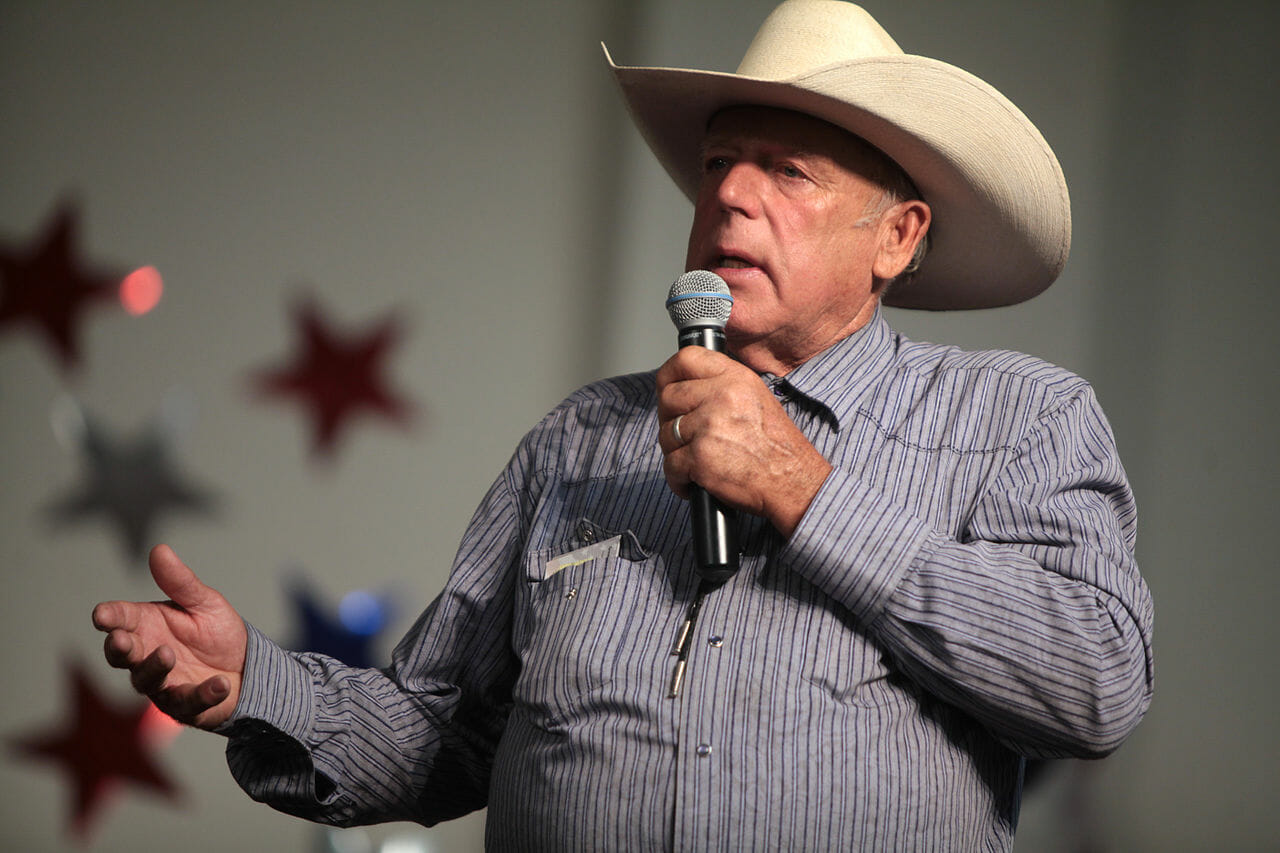Not all law enforcement felt endangered during Bundy standoff

Bureau of Land Management Special Agent Rand Stover was working on little sleep on the morning of April 12, 2014, when the federal government’s attempt to impound Bunkerville rancher Cliven Bundy’s cattle turned extremely tense.
“They’re coming,” Stover’s boss, BLM regional special agent in charge Dan Love said. “Get everyone to the front gate.”
It was shortly before noon. The decision already had been made to discontinue the court-ordered BLM cattle roundup, which was conducted in response to Bundy’s refusal to pay his grazing fees and recognize federal jurisdiction over the public land his animals had used for many years. But when the elder Bundy encouraged his family, friends and followers to cross Interstate 15 in an effort to retrieve nearly 400 of his penned animals, the sparring sides were sent on a collision course that nearly erupted in a shootout.
No shots were fired, but six men are on trial in federal court accused of using the firearms they brought to the protest to threaten and intimidate federal agents.
Testimony revealed the BLM law enforcement agents stationed in Toquop Wash that day were very concerned by the presence of high-powered rifles in the crowd and pointing toward them from superior tactical positions on the northbound I-15 bridge. For his part, Stover during testimony last week in U.S. District Judge Gloria Navarro’s courtroom gave a dramatic recounting of events and how they nearly turned deadly.
Stover had already had what he described as “not a cordial conversation” with Ammon Bundy, one of Cliven’s sons and a man the prosecution considers a “leader” of the alleged conspiracy. Stover recalled, “He said, ‘You know what you can do? You can get the hell off our land. You can leave them cows right there.’”
The BLM, Stover said, was receiving intelligence from a variety of sources indicating that more protesters were coming to the standoff, and some of them were sure to be armed. One Facebook post from a site purporting to support the Bundy cause included what Stover described as, “in essence a call to arms.” It read, “Stand your ground. Do not fire unless fired upon. But if they mean to have a war, let it begin here.”
Although neither side of the courtroom battle credited the line, it was first spoken by patriot farmer John Parker prior to the Battle of Lexington and Concord.
History trivia aside, the Internet missives and dramatic YouTube footage of Bundy family members being roughed up by BLM rangers ticked off a lot of people, many of whom already think the federal agency wields too heavy a hand.
But here’s the challenge of waving too many flags and belching too many patriotic bromides: According to the FBI, Stover testified, there was “significant information” that persons identifying themselves as militia members were on their way to Bunkerville. A deputy assistant director of the FBI told BLM and U.S. Forest Service law enforcement personnel on duty that the Bureau “had never seen that number of purported militia groups” rallying at the same time. There was “a significant risk of a violent encounter,” Stover said he learned.
According to the agents’ testimony, they felt plenty of fear at being placed in the crosshairs of armed protesters.
BLM Special Agent Michael Johnson also testified about the fear he felt after being menaced by gunmen, including one using a spotting scope and range finder of the kind used by long-distance shooters. Johnson kept hidden behind a portable light generator.
It was there he said he saw something that gave him pause: Nevada Highway Patrol troopers out of their vehicles on the southbound bridge above him, walking casually through the crowd of protesters. On the other end of the bridge, a Metro vehicle was parked with an officer out of his car. They didn’t appear bothered much by protesters with guns.
“I’m still confused to this day,” Johnson said of the NHP troopers’ comparatively casual presence. “I don’t exactly know what they were doing.”
Nor does it explain the casually professional approach of Metro Deputy Chief Tom Roberts in a video. He found time to smile and chat with a reporter around the time federal agents felt they were in the crosshairs of the alleged gunmen.
It’s what some courtroom observers might call a little daylight for the defense. If the NHP and Metro personnel weren’t shaking in their boots, was it because the government’s claim of imminent danger was overblown?
Defendant Todd Engel of Idaho, representing himself in the trial, seized the moment. He put Johnson through the agent’s recitation of the timeline and illustrated visually with surveillance video and photographs to raise the issue of whether the emotional response was reflected by the crowd size. The defendant also raised the issue of whether federal agents were conducting themselves in an aggressive manner despite already being informed that the roundup was being discontinued.
“Was that you on the loudspeaker shouting that you would shoot the protesters if they came forward?” Engel asked.
“No it was not,” Johnson replied.
After a week of testimony, a more detailed picture of the standoff that nearly ended in tragedy is beginning to emerge.
This is the third column in a series on the Bundy trial by John L. Smith. You can read his first column here and his second column here. Smith is a longtime Las Vegas journalist and author. Contact him at [email protected], or on Twitter at @jlnevadasmith.
